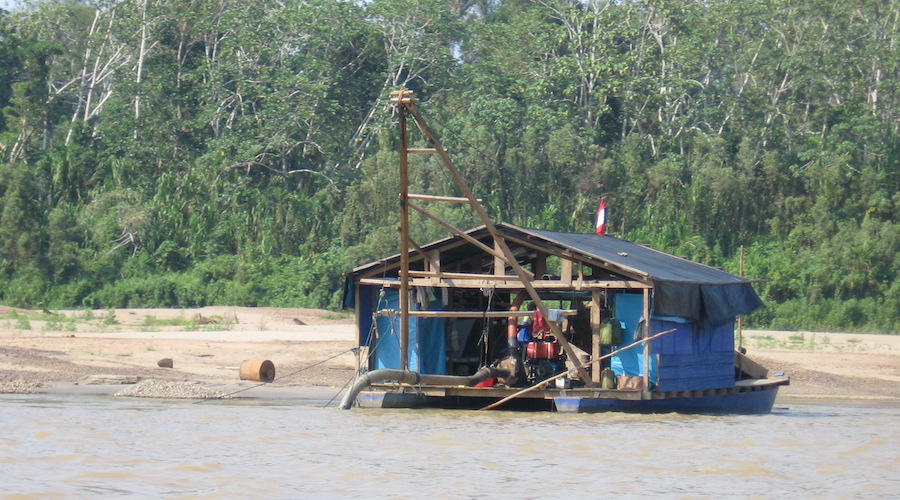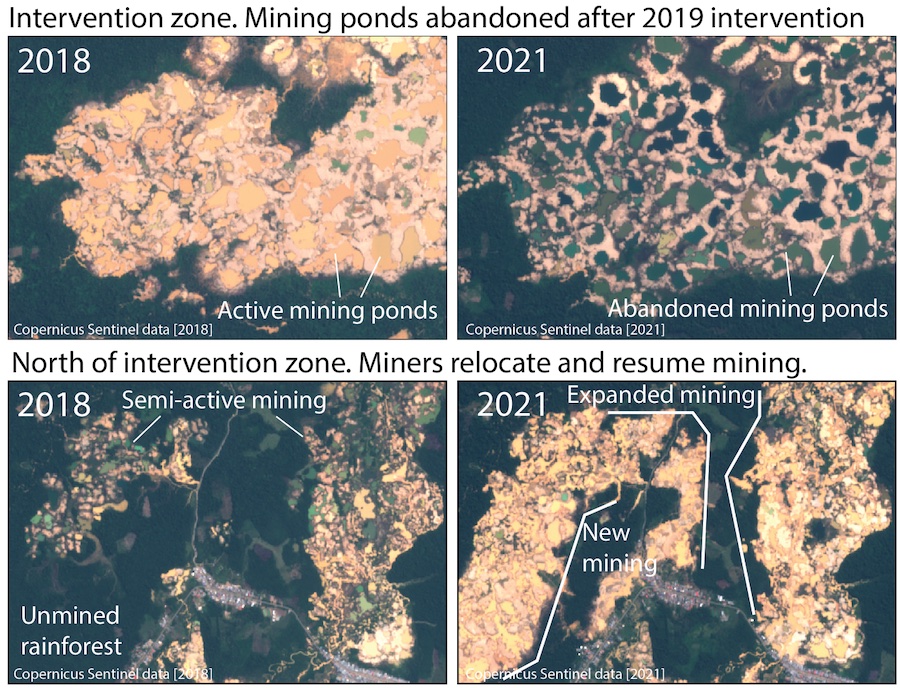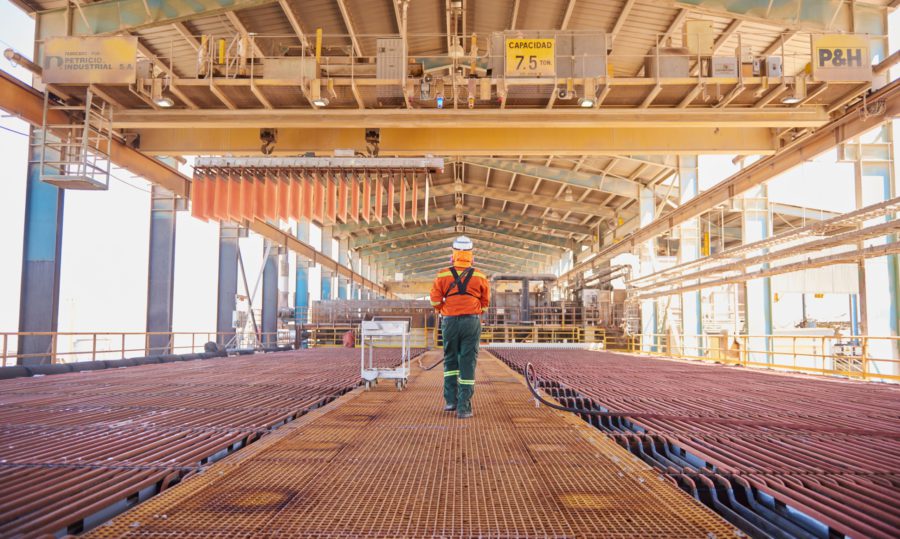Interventions against illegal mining in Peru narrowly effective

A new study by researchers with the American Geophysical Union found that a major intervention against a hotspot for illegal river gold mining proved to be only narrowly effective at halting environmental degradation in the Madre de Dios region of Peru.
In 2019, the Peruvian government carried out a major operation to target illegal gold mining activities in the protected tropical biodiversity hotspot of Madre de Dios in the Amazon basin. By analyzing optical and radar satellite data, the AGU researchers found that the intervention succeeded in stopping illegal mining by 70-90% in the protected region but led to a rapid increase of mining operations in private and public lands outside the targeted zone – in some cases, mining even continued across the highway from the protected region.
While so far the total active illegal mining area decreased 50% relative to its peak in 2019, the scientists expect that if current patterns continue, rates of mining could reach pre-intervention levels. Abandoned mining ponds still sit idle in the ecosystem and very little reforestation has taken place.

“Between [the intervention] and covid, I think we would’ve expected there to be more of a tapering off of the mining activity than there was,” Evan Dethier, lead researcher on the project, said in a media statement. “But instead, we’ve observed a major increase in other areas after that initial dampening due to the direct intervention.”
Dethier pointed out that rivers all flow together, which means that mining that continues upstream has impacts on the areas that were being affected within the reserve and elsewhere.
“It’s all a continuum and it underscores the challenge of intervening in [one part of] of what is such a key part of the local and regional economy,” he said.
In the researcher’s view, while the Peruvian government’s intervention could act as a model for other areas where mining may not be as widespread, the economic incentives for mining remain.
“There’s these twin concerns of the environment and then the livelihoods of the people, and then also in many of these places the industry is significant enough that the national governments have an interest in it being active, so it’s very thorny,” Dethier said.
For the scientist, it remains to be seen whether the areas that stopped being mined are going to recover on their own, or if recovery is a complicated and twisted path.
“Right now, we believe it likely needs to be helped along by targeted remediation efforts,” he said.
{{ commodity.name }}
{{ post.title }}
{{ post.date }}

Comments